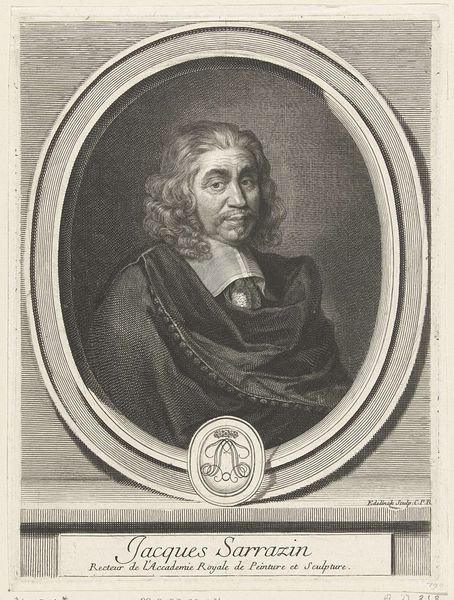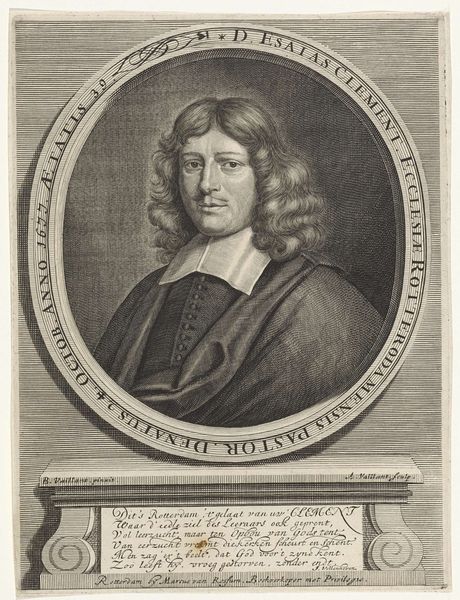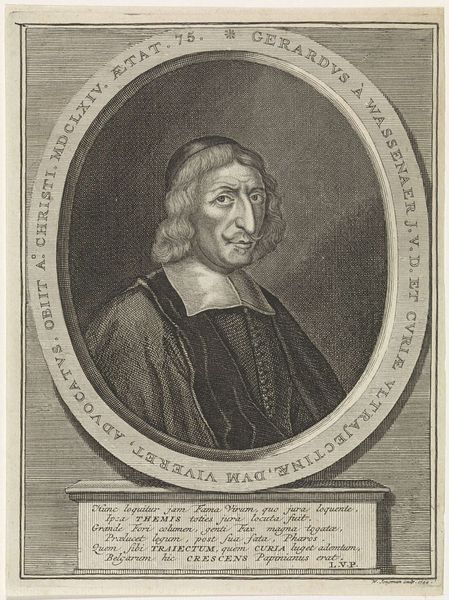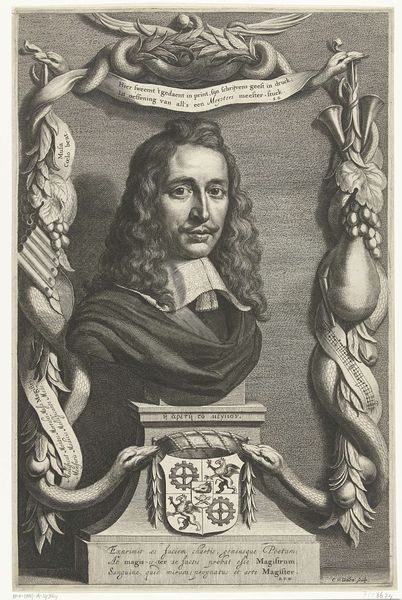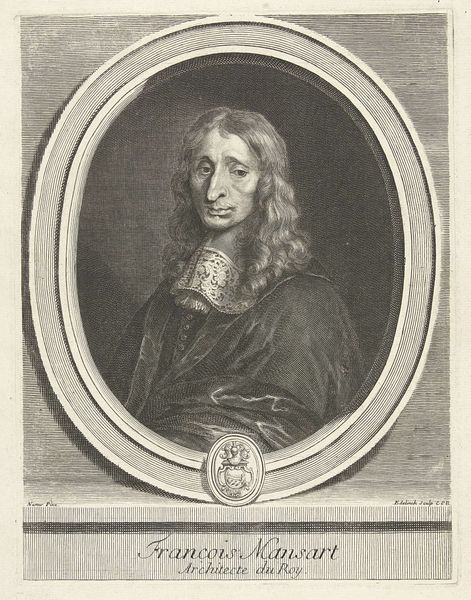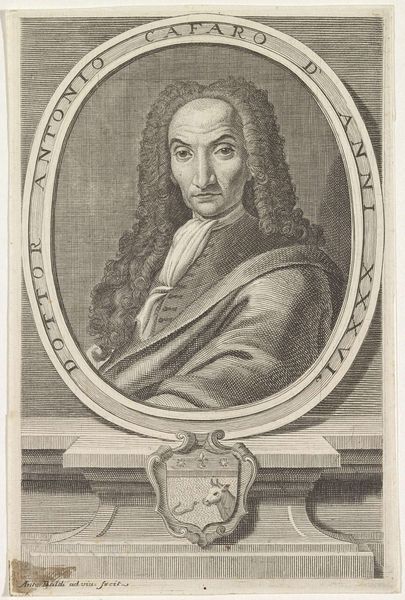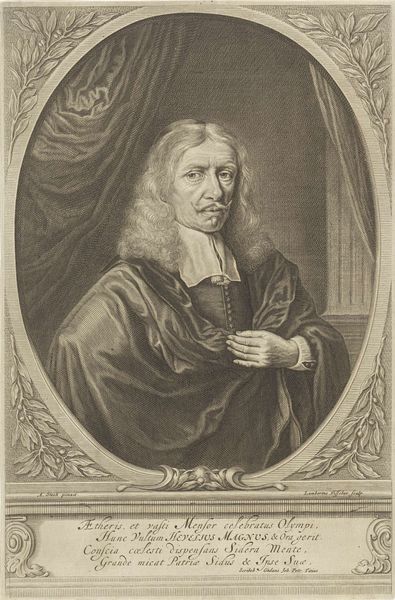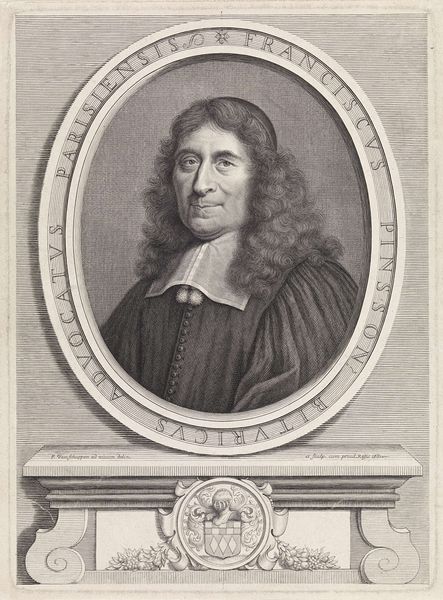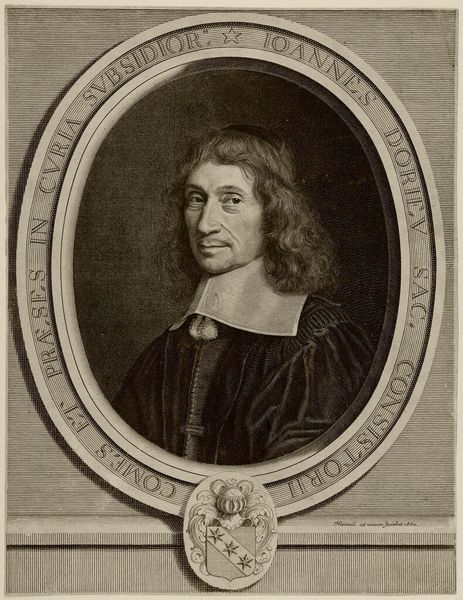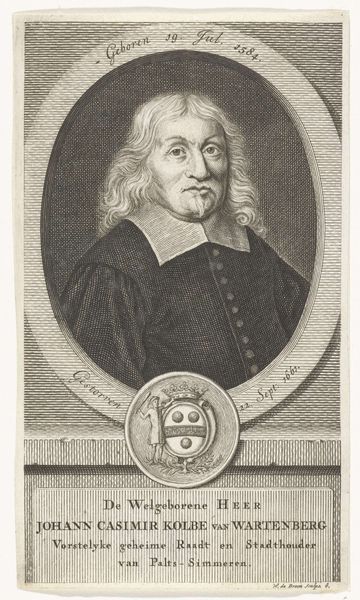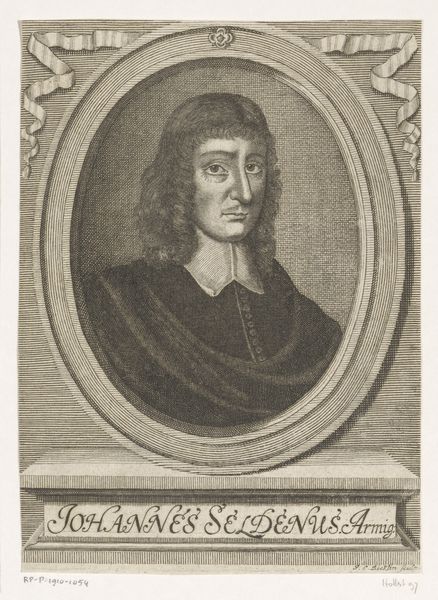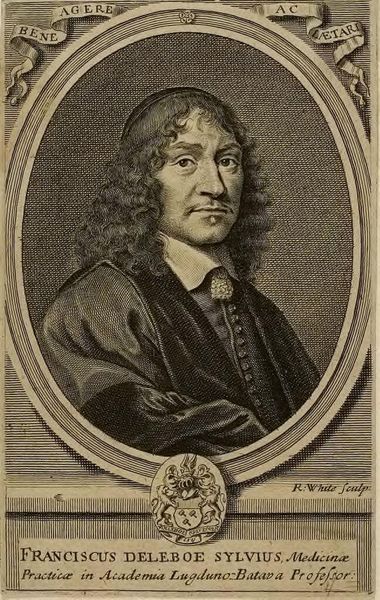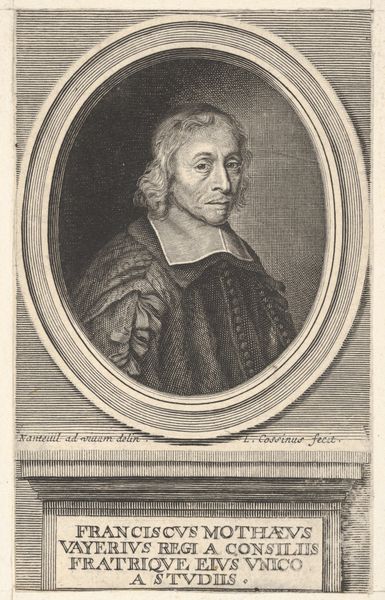
#
pencil drawn
#
toned paper
#
facial expression drawing
#
pencil sketch
#
old engraving style
#
portrait reference
#
pencil drawing
#
limited contrast and shading
#
portrait drawing
#
pencil art
Dimensions: height 146 mm, width 92 mm
Copyright: Rijks Museum: Open Domain
Curator: Here we have a portrait, identified as “Portret van Thomas Ravasini.” Its creation is attributed to Francesco Maria Francia sometime between 1667 and 1735. It's rendered in pencil, giving it quite a delicate feel. Editor: Yes, a striking, understated piece. The tones are soft, almost monochromatic. I’m immediately drawn to the subject’s composed expression and that wonderfully rendered laurel border—it frames him, yet simultaneously speaks of the society he occupies. Curator: The inscription encircling the portrait really gives us insight into its purpose and context, literally labeling him “Thomas Ravasinus, noble of Parma, aged 37.” These early prints often functioned as documents as much as artistic endeavors, disseminating status and identity through a relatively accessible medium. Consider how this engraving was circulated and consumed. Editor: Precisely. And it begs the question: what did it *mean* to be “noble” in Parma at that particular historical juncture? Beyond surface-level admiration for the artistic technique, what ideological underpinnings are subtly embedded? Was the portrayed, for instance, an enabler of oppression or contributor of advancement in some ways, considering the dynamics in those eras? Curator: We can infer the societal values from the visual cues. The attention to detail, the clothing, and even the Latin inscription communicate a very specific kind of prestige. It highlights the skillful craftsmanship evident in every carefully placed pencil stroke and emphasizes the social function it played, broadcasting his position and influence within a hierarchical structure. Editor: A lens through which we see intersections of art and life... It provides more space to understand the historical implications woven into this artwork. By acknowledging how social, racial, and economic forces shaped people during the time in this era, we embrace narratives that transcend a simple visual depiction. It prompts meaningful dialogues on position and hierarchy, challenging us to look at artistic production. Curator: Ultimately, engaging with "Portret van Thomas Ravasini" lets us look closely at the confluence of material practices and symbolic representation, asking important questions about the mechanics of its production and cultural legacy. Editor: Indeed—it pushes us beyond just appreciating aesthetic skill, beckoning toward wider exploration, especially into dynamics surrounding this man's identity in an unequal, historically charged setting.
Comments
No comments
Be the first to comment and join the conversation on the ultimate creative platform.
